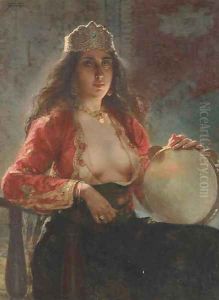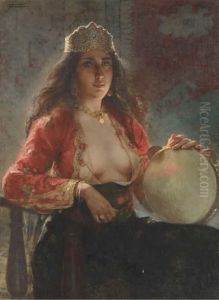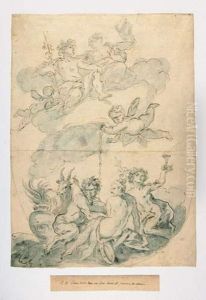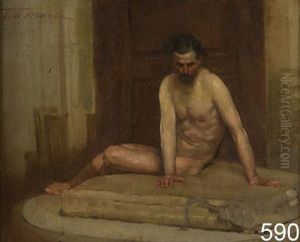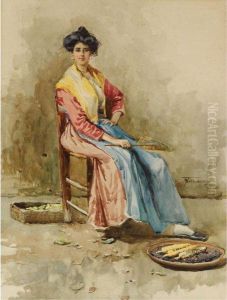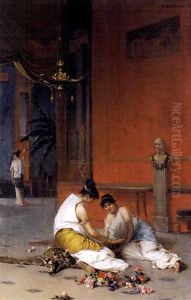Francesco De Maria Paintings
Francesco De Maria, born in 1623 in Naples, Italy, was a prominent figure in the Italian Baroque painting movement, contributing significantly to the development of religious and historical painting during the 17th century. Despite being less widely known than some of his contemporaries, De Maria's work played a crucial role in the Neapolitan school of painting, a testament to the vibrancy and depth of the Baroque era in Southern Italy.
De Maria's artistic journey was deeply influenced by the vibrant cultural and artistic atmosphere of Naples, a city that was a melting pot of ideas and styles due to its position as a major Mediterranean port. He was part of a generation of artists that were defining the Neapolitan Baroque style, characterized by dramatic use of light and shadow, intense emotional expressions, and a strong sense of movement in the compositions. This period in Naples produced a number of significant artists, including Massimo Stanzione and Jusepe de Ribera, with whom De Maria's work is often compared.
Throughout his career, Francesco De Maria was known for his religious paintings, which were sought after by many churches and religious institutions in Naples and its surrounding regions. His works are notable for their spiritual intensity and the meticulous attention to detail in depicting biblical scenes and figures. De Maria was particularly adept at capturing the human form in a way that conveyed deep emotion and devotion, a skill that made his paintings resonate with viewers on a profound level.
Despite his contributions to the Baroque movement and the Neapolitan school of painting, Francesco De Maria has not received the same level of scholarly attention as some of his peers. However, his paintings continue to be studied and admired for their artistic merit and historical significance. De Maria's legacy is preserved in the collections of various museums and churches, where his mastery of the Baroque style and his ability to convey complex religious themes through art continue to be celebrated.
Francesco De Maria passed away in 1690, leaving behind a body of work that encapsulates the spirit and dynamism of the Baroque period in Italy. His dedication to his craft and his ability to imbue his paintings with deep emotional and spiritual significance ensure that he remains an important figure in the history of Italian art, especially within the context of the Neapolitan Baroque movement.
